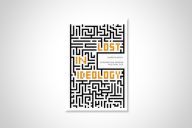You have /5 articles left.
Sign up for a free account or log in.
Five billion years from now, give or take, the star we know as the sun will become a red giant -- its radius extending to what is now the Earth's orbit, though the planet itself will be long gone by then. Our oceans will evaporate sometime in the next billion years. The prospect is difficult to hold in the mind for long, for it means that everything we take to be bedrock permanent is transitory. The bedrock too will melt, eventually.
And yet somehow the thought may still break through, if only for a moment: "So, then what do we do?"
The survival of humankind for another million years, let alone a billion, is almost as hard to posit as its extinction. The horizon of our imaginable future has been downsized. Roaming any further ahead than the next few decades, it seems all too likely to find oneself stranded in a dystopian landscape -- or one made up of ruins. (Best-case scenario? The terraforming of Mars, which could take a while.) Homo sapiens may be the only creature susceptible to depressive realism, and the 20th century may have left us prone to it. But we really ought to be able to bring other capacities into play when our continuing viability as a species is at issue.
By no means merely a happiness pill, Martin Rees's On the Future: Prospects for Humanity (Princeton University Press) nonetheless encourages the reader to think beyond the new norms of diminished and collapsing expectations. The author is astronomer royal and former president of the Royal Society. He speculates from the vantage point of a well-placed nonspecialist -- aware of developments in pertinent fields and good at evoking a sense of cosmic scale and this little planet's place in it. He mentions conjecturing in a book published 15 years ago that "taking all risks into account, there was only a 50 percent chance that we would get through to 2100 without a disastrous setback," probably self-inflicted. He does not revise the figure here, though it sounds more encouraging now than it once did.
Calling himself an "armchair theorist," the author begins with a tour of recent and current developments placing strain on both the natural world and human institutions: population growth, climate change, nuclear proliferation, dependence on extractive sources of energy, pollution and so on. They have the potential, he observes, to "amplify each other to cause runaway and potentially irreversible change." Rees also worries that "simply because our world is so interconnected, the magnitude of the worst potential catastrophes is unprecedentedly large." Consider also the possible impact of an asteroid or the electromagnetic flux from a solar flare. I don't recall any mention of zombies, although maybe that's implicit.
No palliatives are on offer. And yet the book is not a counsel of despair: Rees has an almost H. G. Wells-like confidence in the potentials of scientific and technological progress, as well as in the human capacity to anticipate problems and plan accordingly. He clearly regards asteroids as less of a menace than a global financial system vulnerable to heart attacks. "If short-term payback -- instant gratification -- is prioritized," he writes, "then the welfare of future generations is jeopardized. The planning horizon for infrastructure and environmental policies needs to stretch 50 or more years ahead."
But therein lies the problem. Rees's survey of developments in genomics, robotics, geoengineering, artificial intelligence and biotech (among other fields) never posits them as sufficient in themselves to solve our problems or to undo the damage already done. Each brings its own problems, with the potential to aggravate those we already have. The likelihood of technological benefits accruing to the world's prosperous few while the rest sink further into poverty bothers him. And not least because he sees it as avoidable.
The problem, as Rees understands it, is one not of technical capability but of political will -- a product, to put it another way, of institutionalized shortsightedness. He quotes the remark of Jean-Claude Juncker, then president of the European Commission, from 2007: "We all know what to do; we just don't know how to get re-elected after we've done it." But On the Future is no kind of manifesto; for all his evident frustration with the status quo, the author does not get bogged down in it. Instead the book ventures some thoughts on the directions science and technology might take in the 22nd century, with a particular emphasis on deep-space exploration (perhaps by a human species suitably bioengineered for the task) and the parallel universes that might be discovered once quantum computing allows particle physics to get even weirder than it already is.
"Looking several decades ahead," Rees admonishes us, "we must keep our minds open, or at least ajar, to transformative advances that may now seem [like] science fiction." Doing so may be disconcerting: "We can have zero confidence that the dominant intelligences a few centuries hence will have any emotional resonance with us -- even though they may have an algorithmic understanding of how we behaved." This is less a book than a set of goggles that provides the reader a glimpse of a wider spectrum of possibility than would otherwise be visible.








